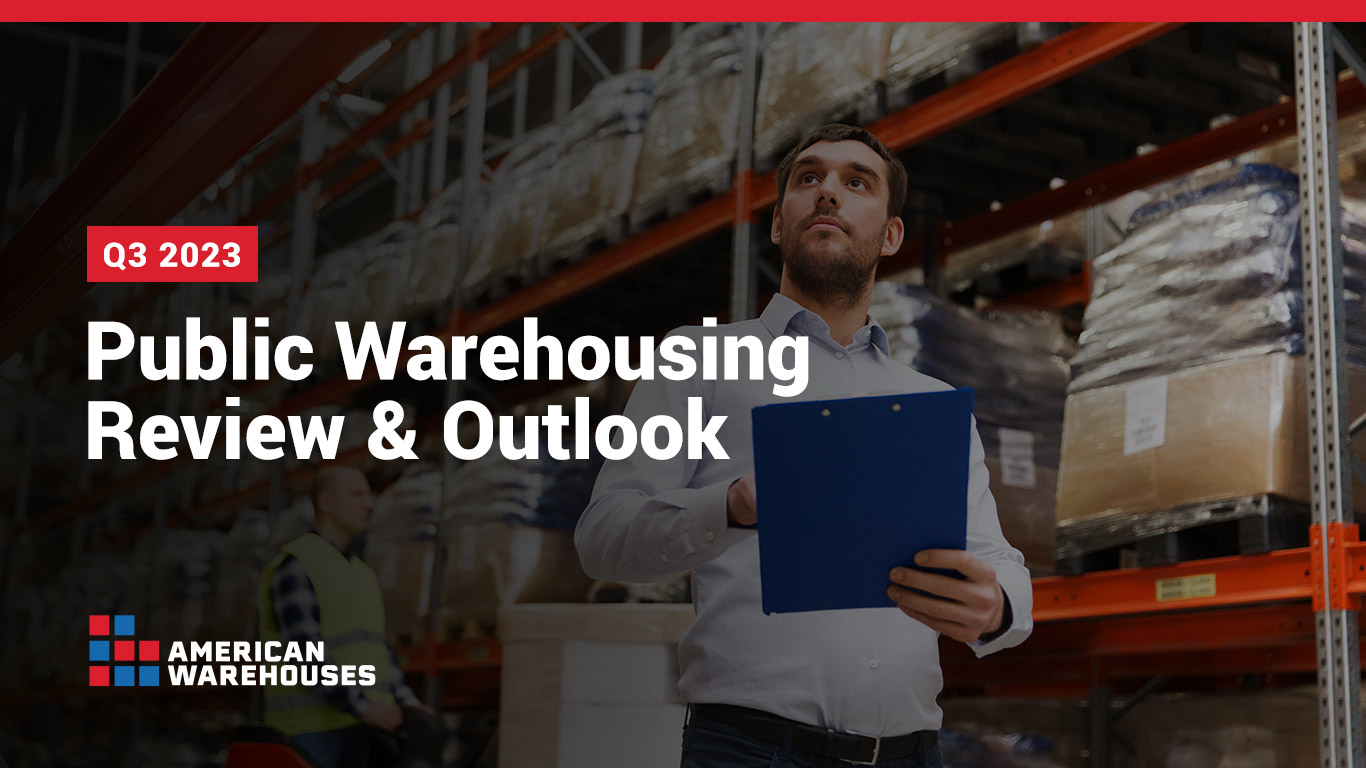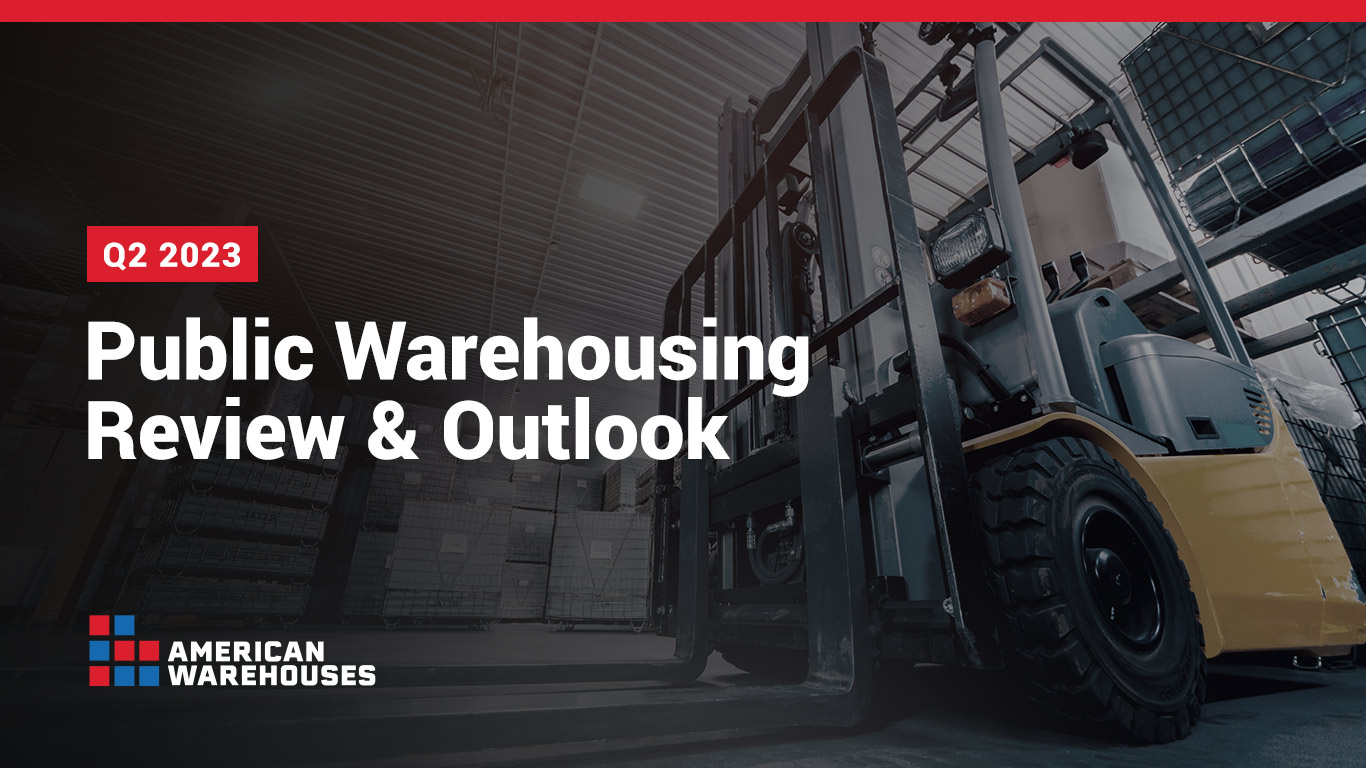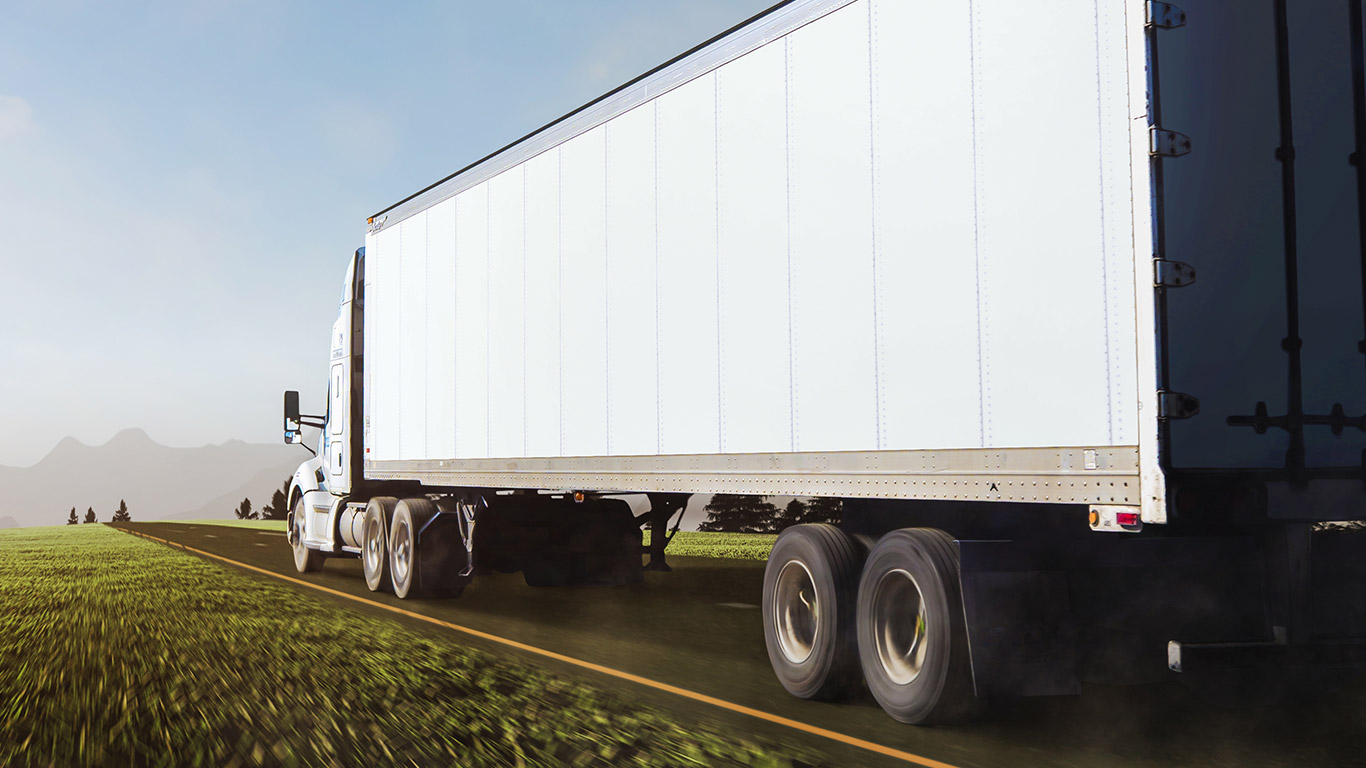Q3 2023 Public Warehousing Review & Outlook

Closing out the third quarter of 2023, there are several factors on the minds of the supply-chain community: Inflation, safety and compliance, threats of a recession, new technology adoption, and more. While some–if not all of these—are affecting the transportation and logistics industry, they could also possibly trickle down to public warehousing.
According to a survey conducted by industry publications Logistics Management, and Modern Materials Handling, 33 percent of respondents said economics will affect operations within the next two years. Thirty-two percent added inflation is on their minds, while 34 percent say workforce challenges will continue to plague the industry. One bright spot: Nineteen percent said they can effectively address internal employment challenges in the near future.
Technology, especially automation, artificial intelligence (AI), robotics, and others will undoubtedly increase its industry foothold. This is critical as efficiency and pricing take center stage. As is always the case when handling combustible and hazardous materials, updated compliance with OSHA and other health-and safety-based agencies will be a must.
In this installment of our review and outlook, we’ll provide a third quarter recap, as well as examine current predictions and trends, emerging technologies, and other industry developments.
2023 Q3 Recap & Predictions
As Texas maintains its top spot for public warehousing, this places American Warehouses’ Houston headquarters as a central locale. Its massive space with convenient distance to the Port of Houston, major area airports, rail lines, and other hub shipping arteries, place it as a top choice for safe storage and transportation of hazardous and combustible materials.
With its close proximity to the U.S.-Mexico border, goods can be easily transported via inter-continental trucking and rail transportation. This is an important infrastructure component as nearshoring continues its Mexico shift, and volumes increase.
- Technology continues to be top-of-mind within public warehousing, especially with tightening operations.
- Warehouse space will become smarter and more efficient.
- Sustainability will advance within warehouse spaces, especially during new construction or retrofitting.
- As always, leasing space within a public warehouse removes the burden of ownership, especially as companies scale up or down during busier seasons.
Industry Challenges & Trends
As previously mentioned, public warehousing is experiencing a seismic shift whereby challenges are being met through new opportunities. Whether labor shortages, technological advancements, increased customer demands, and sustainability, the benefits outweigh the costs incurred when implementing any of these items.
- Talent recruitment and skilled labor will remain a pain point within public warehousing. However, technological advancements can help address some of these gaps.
- Companies will place value and engagement over pricing when working with a public warehouse facility.
- Continued technology adoption will help with efficiencies and increased ROI.
Safety & Sustainability
Following the increased safety precautions adopted during the COVID-19 pandemic, these will remain the standard within public warehousing. Practices such as personal protective equipment and safe, clean working areas are imperative–especially within spaces holding potentially dangerous chemicals.
Prioritizing these factors can not only lead toward a compliant warehouse space free of potential OSHA violations, but also added peace of mind for companies storing goods and materials within the public warehouse.
The onslaught of the pandemic also brought about the need for increased sustainability and green initiatives. This includes waste reduction, as well as improving carbon footprints, and energy efficiency.
- The value and importance of safety will be top growth priority.
- Additional safety measures will be required as technology evolves, and robots and automation become the industry benchmark.
- Sustainability will continue on an upward trajectory. If failing to conform, warehouses could face hefty fines, as well as decreased employee and customer satisfaction.
New Technologies
Technology continues to shift forward as the main conversation topic within public warehousing and storage. According to the previously mentioned industry survey, 63 percent of companies say they are utilizing—or considering—automation within their warehouse operations. For a deeper-dive, 46 percent said they are in the planning stages for this technology.
In May, research analyst firm Gartner released its top Top Strategic Supply Chain Technology Trends for 2023. Specifically, 73 percent of supply-chain IT budgets will focus on growth and performance.
Note additional findings below:
- Actionable AI: Similar to other industries, AI promotes smarter and faster task completion with data-driven decision making.
- Smart Operations: Automating everyday warehouse tasks and functions can improve business transformation and efficiency.
- Mobile Asset Optimization: This will help with increased transparency regarding location, optimization, and processes.
- Cloud Platforms: Known as the gold standard for the majority of supply-chain software, this provides updated information at any time, from anywhere.
- Employee Engagement: Providing the tools employees need to effectively complete their jobs can help with retention, as well as satisfaction, training, and development.
- Composable Application Architecture: These software components facilitate specific business applications and use cases recognized by end users.
- Cyber-Resilient Supply Chains: Investing in solid data security helps warehouses protect their products and services from impending cyberattacks and breaches.
- Integration Services: This ties everything together with a smooth and tactical view of complete technology systems.
The Takeaway
As the nature of public warehousing seemingly shifts on a sometimes weekly basis, it’s important to note that while it may be fraught with challenges–much like any industry–these can often be transformed into growth opportunities. By keeping abreast of efficiency-driven technology changes, public warehouses will continually serve as a critical link within the shipping and logistics infrastructure.
One thing will remain the same, however: Regionally based public storage spaces such as American Warehouses can provide a partnership that’s more than just a storage solution. When working with an experienced operator holding long-term experience with combustible and hazardous materials handling, shippers will gain an extra edge over their competitors, especially when facing internal logistics challenges.
For 75 years, American Warehouses has been assisting businesses with moving commercial inventories through the Houston Texas region. Contact us to learn more.

